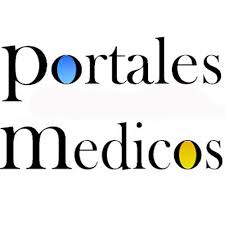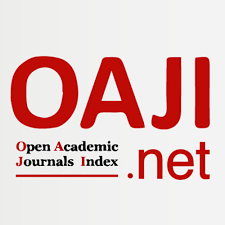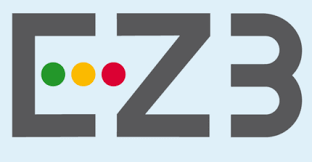Identificación de genes centrales en el carcinoma adenoide quístico y células de cáncer de colon tratadas con alfa-tocoferol mediante análisis bioinformático y aprendizaje automático
Resumen
Introducción: El carcinoma adenoide quístico (ACC) es una neoplasia maligna rara que se encuentra principalmente en las glándulas salivales, representando aproximadamente el 1% de todos los cánceres de cabeza y cuello. El alfa-tocoferol, un potente antioxidante, se ha relacionado con comportamientos de células cancerosas, y su relación con el ACC oral y las células de cáncer de colon tratadas con alfa-tocoferol podría revelar objetivos y estrategias terapéuticas comunes. Objetivo: Identificar genes altamente conectados en el ACC y el cáncer de colon (CC) mediante un enfoque que combina análisis bioinformático, aprendizaje automático y análisis de infiltración inmune. Métodos: Se utilizaron datos de expresión génica del conjunto de datos NCBI GEO para analizar tejido de ACC y glándulas salivales normales. La etapa de preprocesamiento incluyó normalización de datos e identificación de genes diferencialmente expresados (DEGs) utilizando paquetes estadísticos como limma en R o DESeq2. Se empleó Cytoscape para visualizar redes de interacción génica y Cytohubba para identificar genes centrales. Se aplicaron métodos de selección de características y el algoritmo Random Forest para modelos de clasificación, validados mediante validación cruzada. También se analizó la infiltración de tipos de células inmunes en muestras tumorales utilizando herramientas como CIBERSORT, xCell o TIMER. Resultados: Se identificaron genes centrales como CXCL13, TEKT3 y KCNA4, que desempeñan roles clave en la señalización celular, respuestas inmunes y progresión tumoral. Conclusiones: El estudio revela genes centrales cruciales en la biología del ACC y el cáncer de colon, destacando la necesidad de exploración continua y validación para avances terapéuticos en oncología.
Recibido: 19/03/2025
Aceptado: 27/03/2025
Palabras clave
Texto completo:
PDF (English)Referencias
Ramírez-Martínez CM, Jacinto-Alemán LF, Cruz-Hervert LP, Portilla-Robertson J, Leyva-Huerta ER. Bioinformatic Analysis for Mucoepidermoid and Adenoid Cystic Carcinoma of Therapeutic Targets. Vaccines (Basel). 2022;10(9): 1557
Li Y, Gu F, He Y, Xiang J, Huang X, Wang Y, et al. MicroRNA in adenoid cystic carcinoma (Review). Int J Oncol. 2023;62(1):17
Nightingale J, Lum B, Ladwa R, Simpson F, Panizza B. Adenoid cystic carcinoma: a review of clinical features, treatment targets and advances in improving the immune response to monoclonal antibody therapy. Biochim Biophys Acta Rev Cancer. 2021;1875(2):188523.
Cantù G. Adenoid cystic carcinoma. An indolent but aggressive tumour. Part B: treatment and prognosis. Acta Otorhinolaryngol Ital. 2021;41(4):296–307.
Mallikarjunappa SS, Jakate S, Cheng L. Colonic Metastasis of Adenoid Cystic Carcinoma 19 Years after the Primary Tumor Resection. Case Rep Pathol. 2021;2021:5511935.
Guzman Rojas P, Parikh J, Vishnubhotla P, Vergeli-Rojas J. Adenoid Cystic Carcinoma Metastasized to Colon. Cureus. 2018;10(1):e2085.
Manturthi S, Bhattacharya D, Sakhare KR, Narayan KP, Patri S V. Cimetidine-Based Cationic Amphiphiles for In Vitro Gene Delivery Targetable to Colon Cancer. ACS Omega. 2022;7(35):31388–402.
Seo GT, Xing MH, Mundi N, Matloob A, Khorsandi AS, Urken ML. Adenoid Cystic Carcinoma of the Gingiva: A Case Report and Literature Review. Ann Otol Rhinol Laryngol. 2022;131(10):1151–7.
Yadalam PK, Barbosa FT, Natarajan PM, Ardila CM. Graph Neural Networks-Based Prediction of Drug Gene Interactions of RTK-VEGF4 Receptor Family in Periodontal Regeneration. J Clin Exp Dent. 2024;16(12):e1454–8.
Yadalam PK, Sharma S, Natarajan PM, Ardila CM. Gradient boosting-based classification of interactome hub genes in periimplantitis with periodontitis - an integrated bioinformatic approach. Front Oral Health. 2024;5:1462845.
Yadalam PK, Ardila CM. Enhanced hierarchical attention networks for predictive interactome analysis of LncRNA and CircRNA in oral herpes virus. J Oral Biol Craniofac Res. 2025;15(3):445–53.
Thilagar SS, Rathinavelu PK, Yadalam PK. Machine Learning Prediction of Peripheral Mononuclear Cells Based on Interactomic Hub Genes in Periodontitis and Rheumatoid Arthritis. J Orofac Sci. 2024;16(2): 82-90
Yadalam PK, Thirukkumaran PV, Natarajan PM, Ardila CM. Light gradient boost tree classifier predictions on appendicitis with periodontal disease from biochemical and clinical parameters. Front Oral Health. 2024;5:1462873.
Karri RL, Bojji M, Rudraraju A, Mohammad AS, Kosuru V, Kalisipudi S. Unraveling the Molecular Complexity of Adenoid Cystic Carcinoma (ACC): A Comprehensive Exploration of Hub Genes, Protein-Protein Interaction (PPI) Networks, microRNA (miRNA) Involvement, and Drug-Gene Interactions (DGIs). Cureus. 2024;16(2):e54730.
Schlörmann W, Liao S, Dinc T, Lorkowski S, Wallert M, Glei M. Chemopreventive effects of a-tocopherol and its long-chain metabolites a-13’-hydroxy- and a-13’-carboxychromanol in LT97 colon adenoma cells. Food Funct. 2024;15(1):183–95.
Shi C, Ding K, Li KZ, Long L, Li JL, Hu BL. Comprehensive analysis of location-specific hub genes related to the pathogenesis of colon cancer. Med Oncol. 2020;37(9):77.
Liu J, Sun GL, Pan SL, Qin MB, Ouyang R, Huang JA. Identification of hub genes in colon cancer via bioinformatics analysis. J Int Med Res. 2020;48(9):300060520953234.
Yadalam PK, Arumuganainar D, Natarajan PM, Ardila CM. Predicting the hub interactome of COVID-19 and oral squamous cell carcinoma: uncovering ALDH-mediated Wnt/ß-catenin pathway activation via salivary inflammatory proteins. Sci Rep. 2025;15(1):4068.
Yadalam PK, Chatterjee S, Natarajan PM, Ardila CM. Comparison of light gradient boosting and logistic regression for interactomic hub genes in Porphyromonas gingivalis and Fusobacterium nucleatum-induced periodontitis with Alzheimer’s disease. Front Oral Health. 2025;6:1463458.
Gutiérrez-Torres DS, Kim S, Albanes D, Weinstein SJ, Inoue-Choi M, Albert PS, et al. Changes in smoking use and subsequent lung cancer risk in the Alpha-Tocopherol, Beta-Carotene Cancer Prevention Study. J Natl Cancer Inst. 2024;116(6):895–901.
Emerick C, Mariano FV, Vargas PA, Nör JE, Squarize CH, Castilho RM. Adenoid Cystic Carcinoma from the salivary and lacrimal glands and the breast: Different clinical outcomes to the same tumor. Crit Rev Oncol Hematol. 2022;179:103792.
Romanò R, De Felice F, Ferri A, Della Monaca M, Maroldi R, Licitra L, et al. Adenoid Cystic carcinoma of minor salivary glands (AdCCmSG): a multidisciplinary update. Expert Rev Anticancer Ther. 2024;24(7):567–80.
Yadalam PK, Natarajan PM, Saeed MH, Ardila CM. Variational Approaches for Drug-Disease-Gene Links in Periodontal Inflammation. Int Dent J. 2025;75(1):185–94.
Yadalam PK, Neelakandan A, Arunraj R, Anegundi RV, Ardila CM. Exploring the interplay between Porphyromonas gingivalis KGP gingipain, herpes virus MicroRNA-6, and Icp4 transcript in periodontitis: Computational and clinical insights. PLoS One. 2024;19(10):e0312162.
Ardila CM, Yadalam PK. AI-driven histopathologic insights in HPV-positive head and neck squamous cell carcinomas. Oral Oncol. 2025;163:107261.
Yadalam PK, Ardila CM. Artificial Intelligence-Driven Multiomics Network Analysis Reveals Resistance Mechanisms in Oral Cancer. Int Dent J. 2024;74(5):1180–1.
Yadalam PK, Natarajan PM, Mosaddad SA, Heboyan A. Graph neural networks-based prediction of drug gene association of P2X receptors in periodontal pain. J Oral Biol Craniofac Res. 2024;14(3):335–8.
Clough E, Barrett T, Wilhite SE, Ledoux P, Evangelista C, Kim IF, et al. NCBI GEO: archive for gene expression and epigenomics data sets: 23-year update. Nucleic Acids Res. 2024;52(D1):D138–44.
Shannon P, Markiel A, Ozier O, Baliga NS, Wang JT, Ramage D, et al. Cytoscape: a software environment for integrated models of biomolecular interaction networks. Genome Res. 2003;13(11):2498–504.
Fang Y, Peng Z, Wang Y, Gao K, Liu Y, Fan R, et al. Current opinions on diagnosis and treatment of adenoid cystic carcinoma. Oral Oncol. 2022;130:105945.
Yang H, Xu M, Lu F, Zhang Q, Feng Y, Yang CS, et al. Tocopherols inhibit esophageal carcinogenesis through attenuating NF-?B activation and CXCR3-mediated inflammation. Oncogene. 2018;37(29):3909–23.
Huang Y, Zhang X, PengWang, Li Y, Yao J. Identification of hub genes and pathways in colitis-associated colon cancer by integrated bioinformatic analysis. BMC Genom Data. 2022;23(1):48.
Yadalam PK, Anegundi RV, Ramadoss R, Joseph B, Veeramuthu A. Felodipine repurposed for targeting TRPV1 receptor to relieve oral cancer pain. Oral Oncol. 2022;134:106094.
Patil S, Khan SS, Hosmani J, Khan ZA, Muruganandhan J, Mushtaq S, et al. Identification of oral immune disorders–A review and a diagnostic algorithm. Disease-a-Month. 2023;69(1):101350.
Augustine D, Rao RS, Surendra L, Gupta B, Yoithapprabhunath TR, Yadalam PK, et al.. Subepithelial Hyalinisation Predicts Recurrence of Unicystic Ameloblastomas. Diagnostics (Basel). 2022;12(3):756.
Yadalam PK, Anegundi RV, Heboyan A. Prediction of Druggable Allosteric Sites of Undruggable Multidrug Resistance Efflux Pump P. Gingivalis Proteins. Biomed Eng Comput Biol. 2023;14:11795972231202394.
DOI: https://www.doi.org/10.53766/AcBio/Se encuentra actualmente indizada en: | |||
 |  |  | |
  |  |  |  |
 |  |  |  |
 |  |  | |
![]()
Todos los documentos publicados en esta revista se distribuyen bajo una
Licencia Creative Commons Atribución -No Comercial- Compartir Igual 4.0 Internacional.
Por lo que el envío, procesamiento y publicación de artículos en la revista es totalmente gratuito.



